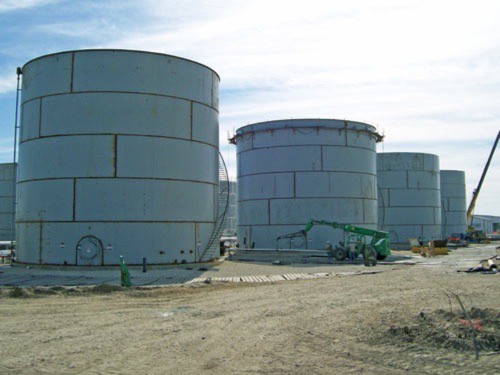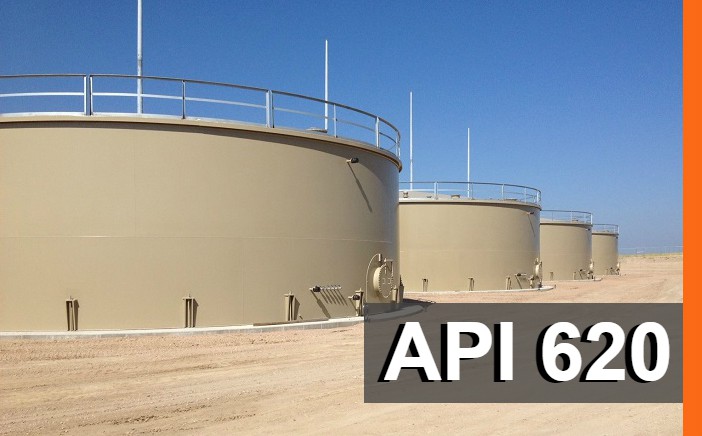A Detailed Look at the Installment Refine of Welding Inspection Techniques
Welding inspection is an essential process that assures structural stability and safety and security. The setup of examination methods entails several methodical actions, each essential to attaining dependable outcomes. From preparation and tool choice to performing visual and non-destructive examinations, each stage needs careful interest. Recognizing these procedures can significantly improve top quality assurance in welding projects. What difficulties develop in carrying out these methods, and exactly how can they be effectively attended to?
Comprehending the Significance of Welding Assessment
Welding examination is a crucial element of making sure architectural honesty and safety and security in construction and manufacturing processes. This practice involves assessing welded joints for flaws, making sure that they fulfill particular requirements and guidelines. By methodically assessing weld high quality, examiners can determine problems such as fractures, voids, and incomplete fusion, which can compromise the strength and durability of structures.
The significance of welding inspection expands past prompt security worries; it assists avoid costly failures and potential hazards in the long-term. Reliable assessment methods foster compliance with sector criteria, consequently improving the overall integrity of bonded components. Furthermore, a durable evaluation process adds to preserving the credibility of building contractors and makers, as it assures customers of the high quality of their projects. Inevitably, comprehending the importance of welding examination is vital for promoting secure building practices and ensuring the longevity of necessary facilities and items.
Choosing the Right Devices for Assessment
When choosing the ideal tools for evaluation, it is vital to consider the specific needs of the welding process and the products included. Numerous inspection techniques, such as aesthetic, ultrasonic, and radiographic screening, necessitate distinct tools customized to their one-of-a-kind demands. For visual assessments, devices like multiplying glasses and calipers are vital for reviewing weld quality. Ultrasonic testing requires specific devices qualified of transmitting and obtaining acoustic waves to find inner flaws. Radiographic testing, on the other hand, utilizes X-ray or gamma-ray sources alongside sensitive film or digital detectors to reveal disparities.
Furthermore, personal protective equipment (PPE) is vital to ensure the security of examiners during assessments. Choosing the right tools not only boosts the precision of examinations yet additionally adds to the general stability and safety of the welding project. Consequently, a comprehensive understanding of available tools and their applications is essential for efficient welding examination.
Planning for the Examination Refine
Before starting the evaluation process, it is vital to establish a complete strategy that outlines the extent and purposes of the assessment. This plan needs to include specific requirements that define what comprises acceptable top quality in the welding work being inspected. Recognizing the relevant codes and criteria is important, as they will certainly assist the inspection standards and approaches.
In addition, workers associated with the assessment must be effectively trained and accredited in welding inspection strategies to guarantee dependability and precision. A checklist can be valuable in organizing the different aspects of the assessment, varying from equipment readiness to ecological conditions that might influence the assessment.

Logistical considerations such as scheduling, available resources, and communication between team members should be addressed. By preparing systematically, examiners can improve the efficiency of the examination and make sure that all essential variables are properly taken into consideration prior to continuing with the assessment itself.
Performing Aesthetic Assessments

Conducting aesthetic evaluations is an essential action in the welding evaluation process, needing careful prep work to ensure reliable assessment. Inspectors need to know with vital problem indications that can indicate possible problems in weld top quality. By focusing on these facets, one can enhance the general reliability of the assessment outcomes.
Getting Ready For Visual Inspection
Aesthetic inspection offers as a crucial very first step go now in the welding assessment procedure, guaranteeing that any possible defects are determined early (API 650 Welding Inspection). Proper preparation is necessary for effective visual assessment. Inspectors ought to begin by important source assessing relevant paperwork, consisting of welding treatments and requirements, to understand the job demands. They have to collect necessary tools, such as amplifying glasses, flashlights, and ideal individual protective equipment (PPE) An extensive exam of the inspection area is essential; examiners must validate it is tidy and cost-free of obstructions. Additionally, it is essential to develop suitable lights problems to boost presence of welds. By taking these primary actions, examiners can produce an atmosphere for determining inconsistencies and guaranteeing the stability of the welded structures
Key Defect Indicators
A comprehensive understanding of essential defect indicators is essential during aesthetic examinations to ensure the high quality and security of welded joints. Inspectors need to concentrate on certain signs such as cracks, porosity, damages, and insufficient combination. Cracks might look like sharp lines and can jeopardize structural honesty. Porosity materializes as little holes that can deteriorate weld strength. Undercuts, which are grooves along the weld side, can cause tension concentration. Insufficient combination suggests that the weld steel did not appropriately bond with the base material, causing a weak joint. By methodically identifying these issues, examiners can ascertain conformity with industry criteria and improve the overall dependability of welded frameworks, ultimately adding to safer functional conditions.
Applying Non-Destructive Checking Techniques

Countless non-destructive testing (NDT) strategies are essential to assuring the integrity of bonded frameworks without compromising their capability. These methods enable assessors to assess weld top quality and spot flaws without causing damage to the products being examined. Usual NDT techniques consist of ultrasonic testing, radiographic testing, magnetic fragment testing, and color penetrant testing. Each technique serves a certain objective, dealing with various sorts of flaws such as fractures, porosity, or insufficient blend.
Implementing NDT methods calls for an organized approach, beginning with choosing the ideal approach based on the materials and the nature of the weld. Training personnel in these methods is crucial for accurate results. Additionally, developing clear procedures and standards guarantees consistency throughout the evaluation procedure. By incorporating NDT right into the welding assessment operations, companies can boost the integrity of their items while decreasing possible risks associated with structural failings. This aggressive strategy inevitably adds to keeping safety and security and top quality criteria in bonded buildings.
Evaluating and documenting Evaluation Results
Effective documents and evaluation of assessment results are vital components check my site of the welding inspection procedure. Exact records of evaluation searchings for function as a referral for quality control and conformity with sector requirements. API 650 Welding Inspection. Inspectors should make use of structured forms or electronic platforms to log details such as the kind of weld, examination techniques employed, and any kind of inconsistencies identified throughout the assessment
Thorough evaluation is vital as soon as data is accumulated. This includes contrasting results versus established standards to determine fads or repeating concerns. Statistical devices may be used to quantify flaws and evaluate their influence on overall weld top quality.
Effective communication of searchings for to relevant stakeholders is necessary. Records and recaps must be succinct and clear, highlighting crucial insights and recommendations for restorative activities. By methodically documenting and assessing evaluation results, organizations can foster constant enhancement in welding practices and improve product integrity.
Frequently Asked Concerns
What Qualifications Are Needed to End Up Being a Welding Examiner?
To end up being a welding inspector, one usually needs appropriate accreditations such as AWS CWI, in addition to experience in welding practices, knowledge of welding codes, and efficiency in assessment strategies to assure top quality and safety and security standards.
How Frequently Should Welding Inspections Be Carried Out?
Welding assessments must be performed consistently, typically after each weld is completed, and periodically throughout tasks. Variables such as task intricacy, market requirements, and regulative demands can influence the frequency of these inspections.
What Is the Price of Welding Examination Providers?
The expense of welding assessment services varies considerably based upon aspects such as job size, complexity, and area. Generally, rates vary from $100 to $150 per hour, with extra fees for specialized screening and certifications.
Exist Certifications for Welding Inspectors?
Yes, there are numerous accreditations for welding inspectors, consisting of those provided by the American Welding Society (AWS) and the International Institute of Welding (IIW) These qualifications ensure inspectors have the required abilities and understanding for reliable examinations.

Exactly how Do I Pick an Evaluation Provider?
To pick an inspection provider, one ought to examine credentials, experience, industry track record, and consumer reviews. Furthermore, contrasting solution offerings and pricing can aid guarantee the selected company fulfills specific project needs successfully.
In addition, personnel involved in the evaluation needs to be adequately trained and certified in welding evaluation methods to ensure integrity and precision. Performing aesthetic inspections is an important step in the welding evaluation process, needing cautious preparation to ensure effective assessment. Visual evaluation serves as a vital very first step in the welding evaluation process, guaranteeing that any possible issues are recognized early. Reliable paperwork and analysis of evaluation results are important components of the welding inspection procedure. Welding assessments must be carried out frequently, usually after each weld is completed, and occasionally throughout jobs.